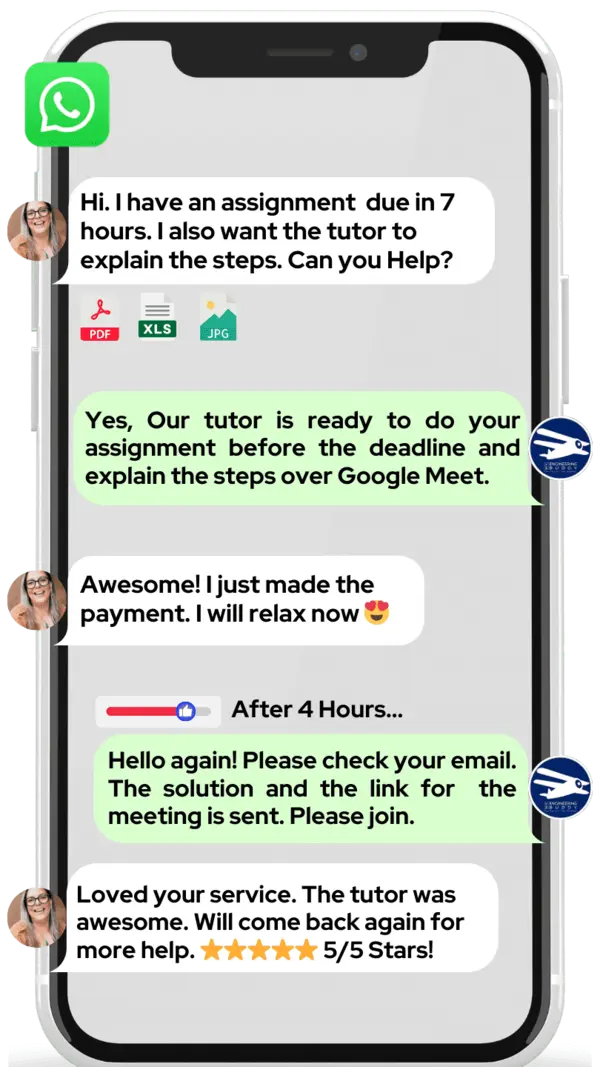

Hire The Best Transmission lines and Waveguides Tutor
Top Tutors, Top Grades. Without The Stress!
10,000+ Happy Students From Various Universities
Choose MEB. Choose Peace Of Mind!
How Much For Private 1:1 Tutoring & Hw Help?
Private 1:1 Tutors Cost $20 – 35 per hour* on average. HW Help cost depends mostly on the effort**.
Transmission lines and Waveguides Online Tutoring & Homework Help
What is Transmission lines and Waveguides?
Transmission lines are specialized conductors—like coaxial cables or microstrip lines—that carry RF (Radio Frequency) signals with controlled impedance, minimizing loss and reflections. Waveguides are hollow metallic or dielectric tubes guiding microwave or millimeter‑wave energy by confining electromagnetic fields within their walls.
Transmission lines are also called feeder lines, feed lines or transmission feeders. Waveguides go by hollow waveguides, dielectric waveguides or guiding tubes.
Key topics include characteristic impedance, propagation constant, reflection coefficient, and VSWR (Voltage Standing Wave Ratio). You’ll study transmission‑line equations, impedance matching (using stubs, transformers or Smith charts), line losses and dispersion. Waveguide subjects cover cutoff frequency, TE/TM/TEM modes, attenuation, power handling and junctions. Real‑life uses range from cable TV feeds to Wi‑Fi antennas.
Faraday’s 1831 discovery of electromagnetic induction paved the way. Maxwell’s 1865 equations predicted wave propagation. In 1880s Heaviside formulated transmission‑line theory, introducing characteristic impedance. Kennelly and Heaviside independently described the impedance earlier. The first microwave waveguide appeared in the 1930s for radar in WWII. Post‑war telecom and satellite links used waveguides extensively. Fiber‑optic cables then emerged, combining guided waves with glass, transforming internet and data centers. Its used everyday.
How can MEB help you with Transmission lines and Waveguides?
Want to learn about transmission lines and waveguides? MEB offers personalized 1:1 online tutoring just for you. If you are a school, college or university student and want top grades on your assignments, lab reports, live tests, projects, essays or dissertations, use our 24/7 instant online homework help service. We prefer WhatsApp chat, but if you don’t use it, please email us at meb@myengineeringbuddy.com
Although our services are for everyone, most of our students come from the USA, Canada, UK, Gulf countries, Europe and Australia.
Students ask for our help because these topics can be hard, they have too many assignments, some questions are tricky or they have health or personal issues. Others work part time, missed classes or find it hard to keep up with their professor.
If you are a parent and your ward is struggling in this subject, contact us today and help your ward ace their exams and homework—they’ll thank you!
MEB also supports over 1000 other subjects with expert tutors, making learning faster and helping you enjoy a stress‑free academic life.
DISCLAIMER: OUR SERVICES AIM TO PROVIDE PERSONALIZED ACADEMIC GUIDANCE, HELPING STUDENTS UNDERSTAND CONCEPTS AND IMPROVE SKILLS. MATERIALS PROVIDED ARE FOR REFERENCE AND LEARNING PURPOSES ONLY. MISUSING THEM FOR ACADEMIC DISHONESTY OR VIOLATIONS OF INTEGRITY POLICIES IS STRONGLY DISCOURAGED. READ OUR HONOR CODE AND ACADEMIC INTEGRITY POLICY TO CURB DISHONEST BEHAVIOUR.
What is so special about Transmission lines and Waveguides?
Transmission lines and waveguides stand out because they treat signals as traveling waves, not just flowing currents. By spreading resistance, inductance and capacitance along their length, they keep high‑frequency signals intact. These structures guide energy precisely, like pipes for radio waves, avoiding the shortcuts and losses of ordinary wires. This wave‑based view makes them unique in handling fast, complex signals.
Compared to simple wires or circuit boards, transmission lines and waveguides offer wider bandwidth, lower loss and better control of signal direction. They transmit power efficiently over long distances and high frequencies. On the downside, they require exact impedance matching, can be bulky at lower frequencies, cost more to manufacture, and may suffer dispersive effects if not designed correctly.
What are the career opportunities in Transmission lines and Waveguides?
After a bachelor’s in electrical engineering, you can specialize in transmission lines and waveguides through a master’s or PhD in microwave and RF engineering. Universities now offer focused courses on 5G, photonic waveguides, and metamaterials. Short professional certificates in high‑frequency circuit design are also popular for hands‑on skills.
The job market for experts in transmission lines and waveguides is strong in telecom, aerospace, defense, and satellite communications. Growing demand in 5G networks, Internet of Things, and radar systems means consistent openings. Research labs and startups working on smart antennas and millimeter‑wave links also hire fresh graduates.
Common roles include RF engineer, microwave design engineer, antenna design specialist, test and validation engineer, and research scientist. Daily tasks cover circuit simulation, building prototypes, measuring signal loss and impedance, and optimizing layout to handle higher frequencies with minimal distortion.
We study transmission lines and waveguides to understand how high‑frequency signals travel with low loss and controlled impedance. Their applications span wireless networks, radar, fiber‑optic links, and medical imaging devices. Learning these topics helps you design efficient power transfer systems, achieve wide bandwidth, and reduce interference.
How to learn Transmission lines and Waveguides?
To learn Transmission Lines and Waveguides, start by reviewing basic circuits and electromagnetic concepts. Break the topic into small steps: first understand key terms like impedance, reflection coefficient, and standing waves. Next, study simple transmission line models and how waves travel along them. Work through sample problems calculating VSWR and input impedance. Watch demo videos to see wave behavior, draw your own diagrams, and test yourself with practice questions. Build from simple to complex topics gradually.
Transmission lines and waveguides can feel tough at first because they combine physics and math. The trick is to learn one idea at a time and use visuals—graphs, animations, and drawings—to see how waves move. With regular practice and clear examples, you’ll find the concepts much more straightforward.
You can certainly prepare on your own using good textbooks and online lectures, coupled with daily problem solving. But if you hit roadblocks or want faster progress, a tutor can guide you through tricky parts, answer questions in real time, and keep you on track. Personalized feedback often saves time and boosts confidence.
At MEB, we offer 24/7 online one‑on‑one tutoring sessions with expert electrical engineers. We’ll explain concepts clearly, work through problems together, and share custom study plans. We also provide step‑by‑step assignment help to make sure you understand each solution and cover every exam topic.
Time needed varies by background and pace. If you already know circuits and basic electromagnetics, you can grasp core transmission line and waveguide ideas in about 4–6 weeks with 5 hours of study per week. To build strong problem‑solving skills and review everything thoroughly, plan for 2–3 months of consistent practice before your exam.
Youtube channels: All About Circuits, ElectroBOOM, Michel van Biezen. Websites: Khan Academy (khanacademy.org), All About Circuits (allaboutcircuits.com), RF Cafe (rfcafe.com). Books: Field and Wave Electromagnetics by David K. Cheng; Microwave Engineering by David M. Pozar; Engineering Electromagnetics by William H. Hayt and John A. Buck. Use these for clear theory, worked examples, and extra practice.
College students, parents, and tutors in the USA, Canada, UK, Gulf, and beyond: if you need a helping hand—be it 24/7 online one‑on‑one tutoring or assignment support—our tutors at MEB can help at an affordable fee.









